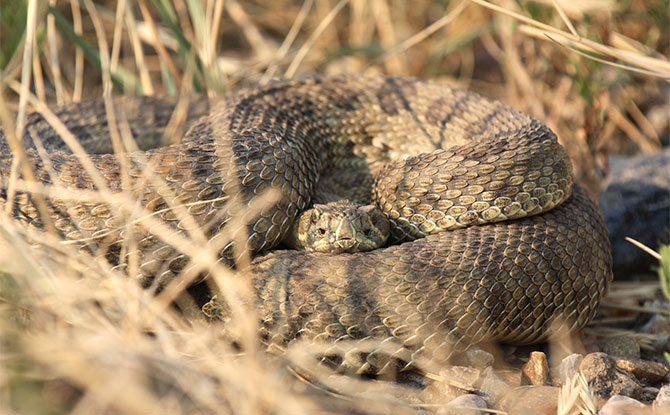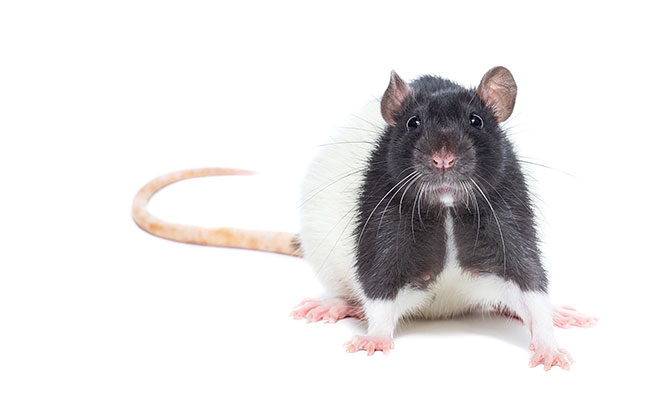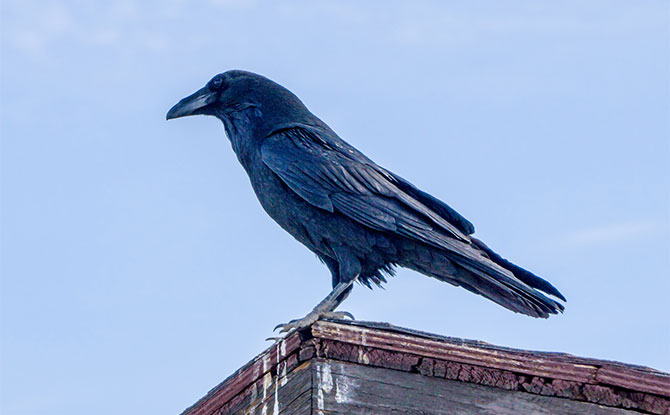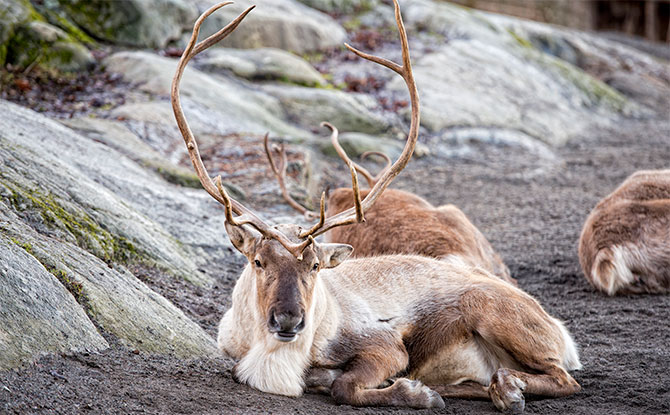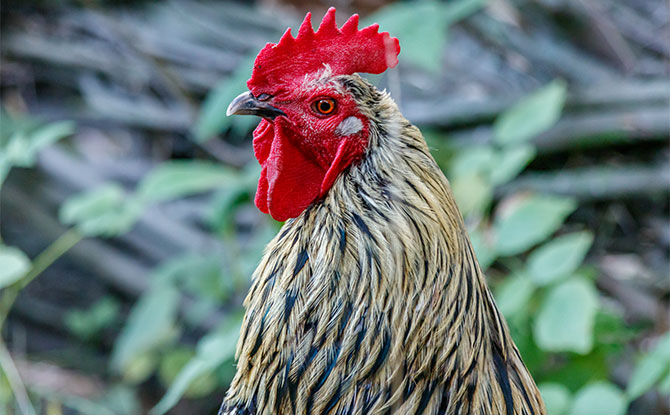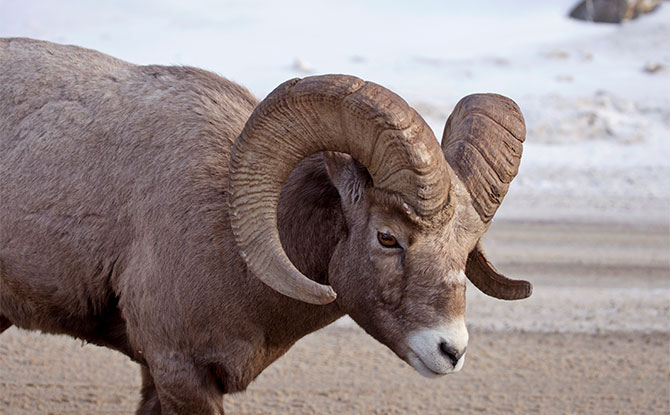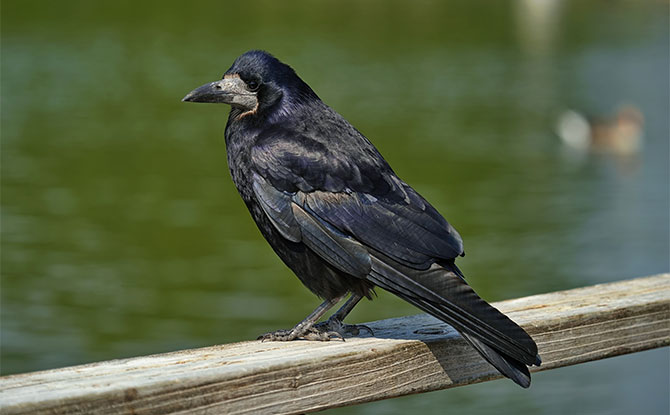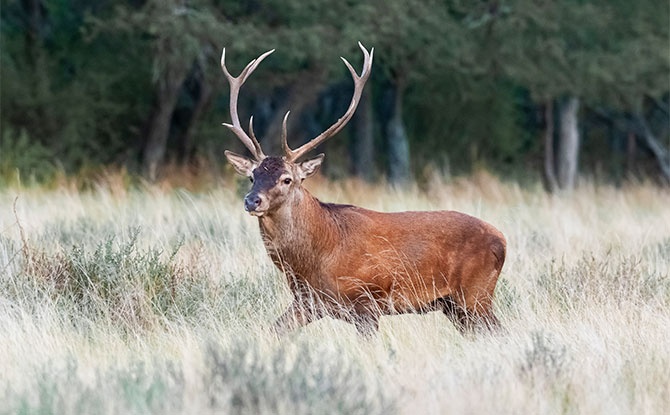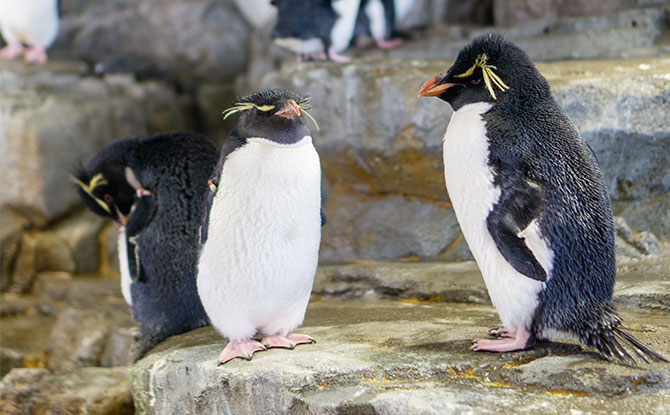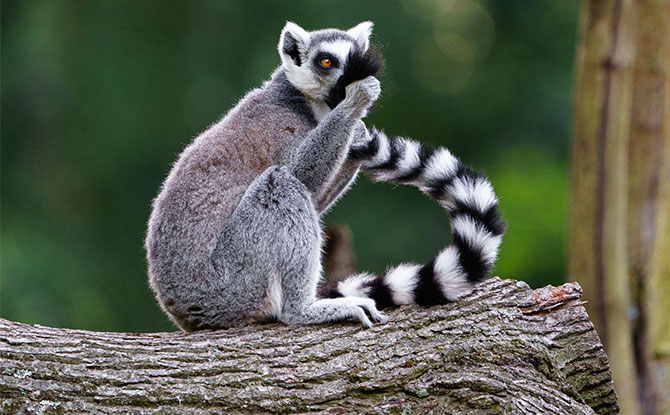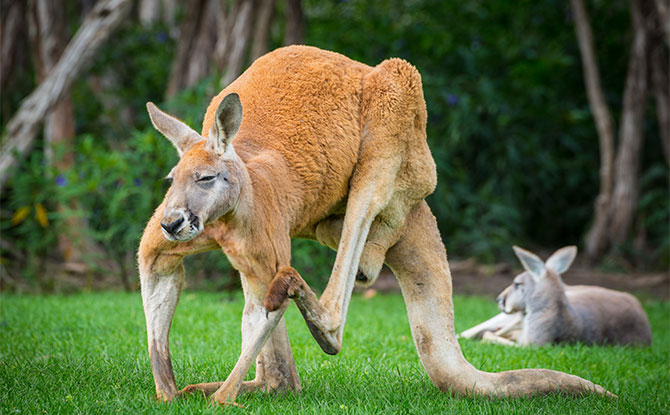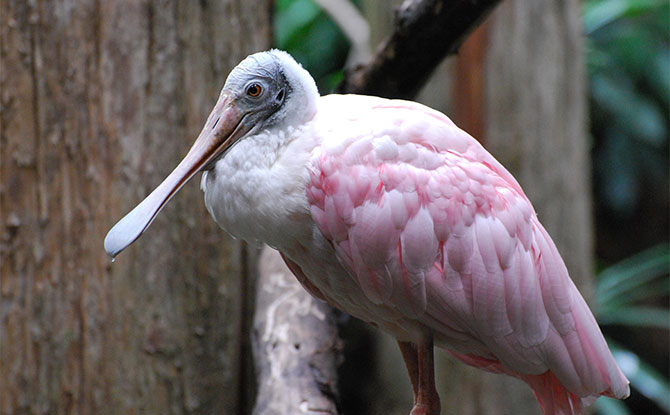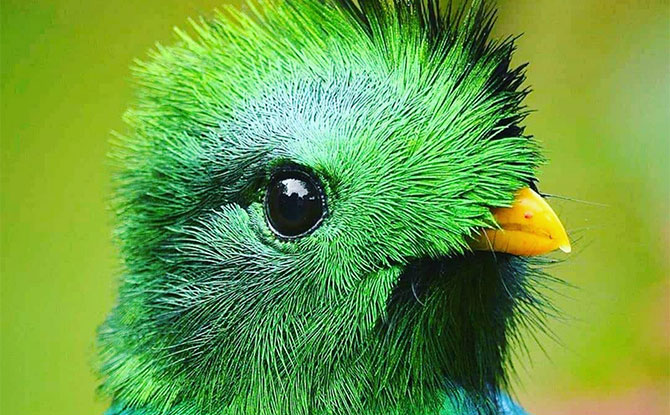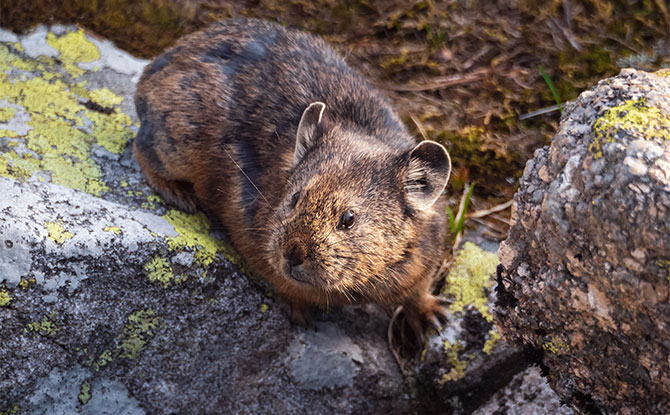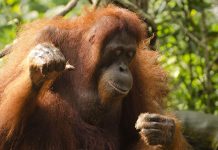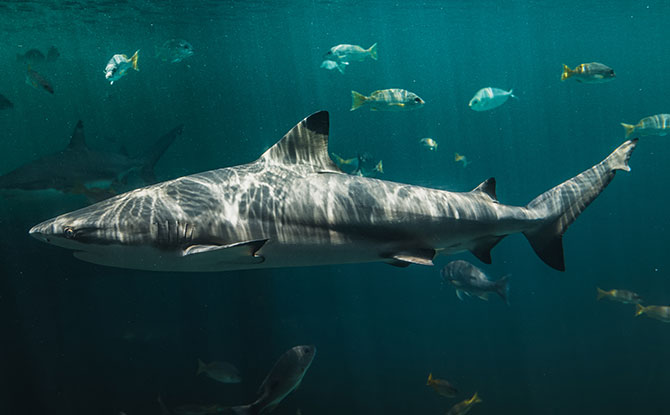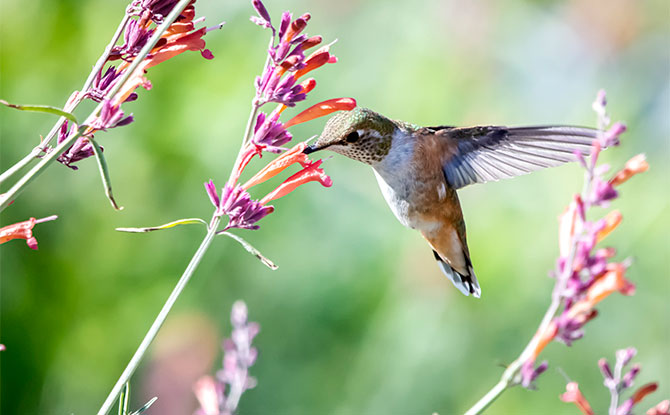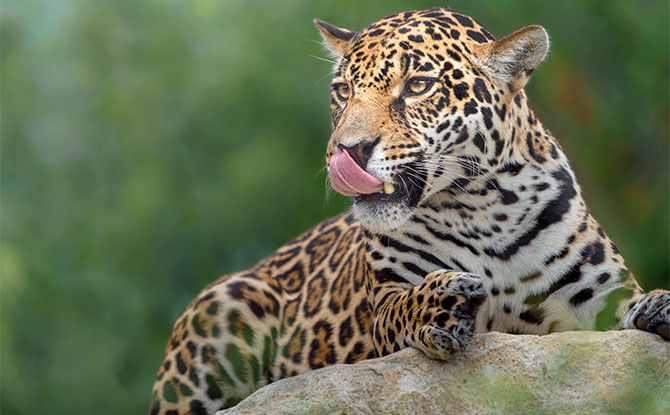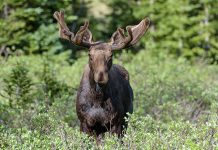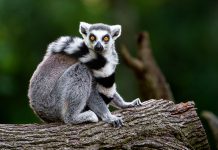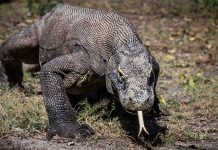
Are you curious about animals that start with R? From raccoons to rhinoceroses, there is a diverse range of fascinating creatures whose names start with the letter R.
We will explore various animals with names starting with R, highlighting their unique characteristics and traits. Whether you’re a wildlife enthusiast or simply interested in expanding your knowledge, you’re in for an exciting adventure!
Discover the wonderful world of animals that start with R.
28 Animals Starting With R
Raccoon
FREE FOR LITTLE DAY OUT PARENTS: Sign Up for a Free Trial with ACT 3 Academy to Find Out If Drama Classes are Right for Your Child
Easter Egg Hunts: Fun For Kids & Families
The raccoon is a mammal native to North America. It is known for its distinctive markings, including a mask-like pattern on its face. Raccoons are highly intelligent and adaptable animals that can thrive in a variety of environments. They are primarily nocturnal and are known for their scavenging habits.
A fun fact that you may not know is that raccoons have a unique ability to wash their food before eating it.
Rabbit
Rabbits are herbivorous mammals found worldwide. They are known for their long ears, soft fur, and ability to reproduce quickly. Rabbits are social animals that live in groups and create complex burrow systems called warrens.
These adorable creatures are well-known for their role as herbivores in various ecosystems. With their cuddly appearance and gentle demeanor, rabbits are incredibly popular pets and have been domesticated for centuries. However, in the wild, rabbits play a crucial role in the balance of nature as herbivores.
As herbivores, rabbits have a diet primarily consisting of plants, including grasses, leaves, and bark. Their sharp incisors and powerful jaws allow them to chew through tough vegetation, providing them with the necessary nutrients for survival. Their ability to quickly reproduce ensures that there is a stable rabbit population to support other animals that rely on them as a food source.
Rabbits are known for their iconic long ears, which serve multiple purposes. Firstly, their large ears help them detect potential predators from a distance, allowing them to stay alert and flee if necessary. Secondly, these long ears also aid in temperature regulation. Since rabbits cannot sweat, they rely on their ears’ blood vessels to dissipate heat and cool down their bodies during hot weather.
When it comes to their living arrangements, rabbits are master architects. They create intricate burrows called warrens, which serve as their homes and provide shelter from predators and harsh weather conditions. These burrows often have multiple entrances and chambers, allowing rabbits to escape quickly if needed.
Interestingly, rabbits have a unique digestive system that allows them to extract more nutrients from their food. This system involves coprophagy, a behavior where rabbits eat their own feces. While it may sound strange to us, this process allows them to extract essential nutrients, such as vitamins and proteins, from their food that were not fully digested the first time around.
Overall, rabbits are fascinating creatures that contribute to the biodiversity and balance of ecosystems worldwide. Their herbivorous diet, long ears for protection and temperature regulation, and complex burrow systems are just a few of the traits that make them a vital part of our natural world.
Read about more fascinating facts about rabbits.
Rattlesnake
Rattlesnakes are venomous snakes found mainly in North America. They are known for the distinctive sound they produce by shaking their rattles at the end of their tails. Rattlesnakes use their venom to immobilize and kill their prey, which primarily consists of small mammals and birds. These venomous reptiles are well-adapted to their environment and play a crucial role in the ecosystem as both predators and prey. When threatened, rattlesnakes will rattle their tails to warn potential predators or intruders, providing a unique auditory warning system.
An interesting fact about rattlesnakes is that they can control the amount of venom they inject, and they often give “dry bites” as a warning without injecting venom.
Rat
The rat is a small rodent found worldwide. It is a highly adaptable animal that can thrive in diverse habitats, including urban areas. Rats are known for their ability to transmit diseases to humans and other animals, making them a significant public health concern.
Rats have incisors that continuously grow throughout their lives, and they need to gnaw on objects to keep their teeth at a manageable length.
Raven
The raven, a highly intelligent and adaptable bird, is closely related to crows and is known for its mysterious symbolism in various cultures. With its distinct black plumage and imposing presence, the raven has captivated human imagination for centuries.
Ravens have a diverse diet that includes carrion, insects, small mammals, and even other birds’ eggs. They are opportunistic scavengers and will take advantage of whatever food sources are available in their environment.
One fascinating aspect of ravens is their exceptional problem-solving abilities. They have been observed using tools to obtain food, demonstrating their ingenuity and resourcefulness. These clever birds can manipulate objects to access hard-to-reach areas, further highlighting their intelligence.
In folklore and mythology, ravens are often associated with mystery and magical powers. They have been portrayed as messengers, psychopomps, and symbols of wisdom and prophecy. Their presence is believed to indicate a connection between the mortal and spiritual worlds.
The raven’s intelligence, adaptability, and symbolism make it a truly remarkable creature. Whether in the wild or in our imaginations, these birds continue to fascinate and intrigue us with their unique qualities.
Reindeer
Reindeer, also known as caribou in North America, are large mammals found in the Arctic and subarctic regions. These majestic creatures are well-adapted to survive in harsh and cold environments. They play a significant role in the ecosystem and have a rich history of coexistence with indigenous peoples.
Reindeer are highly social animals that exhibit herding behavior. They form large groups, called herds, and migrate together in search of food and suitable habitats. Herding provides safety in numbers and allows them to better navigate their vast and challenging territories.
One of the most remarkable features of reindeer is their impressive antlers. Both males and females grow antlers, although the males shed theirs after the mating season. Antlers serve various purposes, including defense, attracting mates, and establishing dominance within the herd.
Reindeer have adapted to the Arctic’s unique conditions in several ways. One fascinating adaptation is their ability to see ultraviolet light. This adaptation helps them navigate and locate food in the region’s low-light conditions.
Reindeer are remarkable mammals that have thrived in the Arctic for centuries. Their migration patterns, herding behavior, and impressive antlers make them one of the most iconic species of the region. By understanding and appreciating these incredible creatures, we can contribute to their conservation and the preservation of their fragile habitats.
Red Panda
The red panda is a small mammal native to the eastern Himalayas and southwestern China. With its distinctive red fur and bushy tail, the red panda is a charming and unique creature. It is classified as a mammal and is known for its adorable appearance and playful behavior.
Red pandas primarily feed on bamboo, which makes up the majority of their diet. However, they also consume other plant material, such as fruits, and occasionally feed on eggs and small mammals. The red panda’s diet is specialized, reflecting its evolutionary adaptation to bamboo-rich environments.
The red panda is an endangered species, facing threats such as habitat loss and poaching. As their natural habitat in the Himalayas is being destroyed, the red panda’s population has dramatically declined. Conservation efforts are underway to protect and preserve this beautiful and unique mammal.
One intriguing fact about red pandas is that they have a false thumb, which is an extension of their wrist bone. This adaptation allows them to grip bamboo while eating, aiding their survival in their bamboo-dominated habitats.
Rhinoceros
Rhinoceroses are large, herbivorous mammals found in Africa and Asia. These magnificent creatures are known for their distinctive horn, which has unfortunately made them a target for relentless poaching. The demand for rhino horns in some cultures has led to a severe decline in their populations, posing a significant threat to their survival.
Rhinoceroses are grazers. They help shape and maintain the landscape by consuming vegetation, allowing for the growth of diverse plant species. Additionally, their grazing patterns create pathways for other animals, contributing to a healthy and balanced ecosystem.
It’s important to raise awareness about the conservation of rhinoceroses and the devastating effects of poaching. Efforts to protect and preserve these iconic mammals are crucial for their survival and the overall health of the environments they call home.
An interesting fact about the white rhino is that the “white” is a misinterpretation of the Afrikaans word “wyd,” which means wide. It refers to the rhino’s broad mouth, not its color.
Read more interesting facts about rhinos.
Rooster
A rooster is a male chicken known for its distinctive crowing sound and brightly colored feathers. Roosters play an important role in poultry groups, providing protection for the flock and establishing dominance within the hierarchy. They communicate with other chickens through a variety of vocalizations and body language.
Roosters are known for their crowing, which serves multiple purposes. It announces the rooster’s presence, establishes dominance, and acts as a territorial warning to other roosters. The crowing is also associated with the rooster’s natural instincts as a morning wake-up call. With their vibrant plumage and confident demeanor, roosters are a symbol of masculinity and pride.
Did you know that roosters can distinguish between different predators based on their specific vocalizations and adjust their alarm calls accordingly.
Ram
A ram is a male sheep known for its large, curved horns. Rams may be domesticated animals that are raised for their wool, meat, and breeding purposes. They play an important role in agricultural systems, providing valuable resources and contributing to the economy.
Rams are highly recognizable due to their impressive horns, which can curl and spiral in various shapes and sizes. These horns serve multiple purposes, including fighting, defense, and display. During the mating season, rams engage in head-butting contests to establish dominance and mating rights within their herd.
In addition to their physical attributes, rams have unique behavioral characteristics. They are social animals that form tight-knit groups, known as herds or flocks. Within these groups, rams exhibit hierarchical structures based on dominance and age.
Domesticated rams have been selectively bred for desirable traits, such as increased wool production and meat quality. Their wool is used in the textile industry to create a variety of products, including clothing, blankets, and carpets. Rams also provide a source of nutritious meat consumed by many cultures around the world.
Rams are fascinating creatures that have been an integral part of human civilization for centuries. Whether it’s their majestic horns, valuable wool, or delicious meat, rams continue to play a significant role in our lives.
Rook
Rooks are corvid birds found in Europe and parts of Asia. They are highly social animals that live in large colonies called rookeries. Rooks exhibit complex social behaviors, including cooperative breeding and communal roosting. They are known for their distinctive “caw” sound and their intelligence.
Rooks are highly adaptable and have been observed using tools to obtain food, solve puzzles, and interact with their environment. These intelligent birds have the ability to problem-solve and demonstrate remarkable cognitive skills.
Red Deer
Red deer are majestic mammals found in both Europe and Asia. They are known for their distinctive red-brown fur and large antlers, which are shed and regrown each year. These impressive antlers play a significant role during the rutting season, a period in which males engage in fierce competition for mates.
During the rutting season, male red deer display their antlers to attract females and establish dominance over other males. This display involves roaring, parallel walks, and clashes between individuals. The intense rutting behavior of red deer showcases their strength and aggression as they vie for reproductive success.
Red deer possess exceptional hearing and can detect high-frequency sounds that are inaudible to humans. This acute sense allows them to be vigilant and responsive to potential threats in their environment.
With their graceful appearance and striking antlers, red deer are truly a sight to behold. Whether in the picturesque landscapes of Europe or the vast expanses of Asia, these magnificent mammals have captivated human interest for centuries.
Rat Snake
Rat snakes are non-venomous snakes found primarily in North America. They play a crucial role in rodent control, making them beneficial to humans. Rat snakes are skilled climbers and are often found in trees and branches.
They are constrictors, meaning they kill their prey by squeezing them until they suffocate. These snakes have developed remarkable escape skills, allowing them to squeeze through small openings or gaps in their environment.
Rottweiler
The Rottweiler is a large and powerful dog breed known for its loyalty and protective nature. Originally bred in Rottweil, Germany, these dogs were primarily used as working dogs, performing tasks such as herding livestock and pulling carts.
Rottweilers are highly intelligent and trainable, making them excellent working dogs in various fields, including search and rescue, police and military work, and therapy assistance. Their strength and endurance allow them to excel in demanding tasks and difficult environments.
Aside from their impressive working abilities, Rottweilers make devoted and loving family pets. They are known for being especially loyal to their owners and protective of their families. With proper socialization and training from an early age, these dogs can form strong bonds and become well-rounded companions.
It’s important to note that Rottweilers require consistent training and firm leadership to ensure they develop good behaviors and manners. Early socialization is key to help them interact positively with other animals and people.
One notable characteristic of Rottweilers is their strong bite force, which historically made them excellent guard dogs. Although they have a protective nature, proper training and socialization can help mitigate any potential aggression issues.
Rottweilers are a noble and impressive breed with a rich history and important working heritage. Whether as a working dog or a family companion, a well-trained and cared-for Rottweiler can be a loyal and protective addition to any household.
Raccoon Dog
The raccoon dog, also known as the tanuki, is a canid species native to East Asia. Although its name suggests a close relation to raccoons, the raccoon dog is actually more closely related to foxes and wolves. These adaptable creatures can be found in various habitats, including forests, urban areas, and agricultural land, in Asia and parts of Europe.
The raccoon dog is known for its distinctive appearance, with fur that resembles that of a raccoon. It has a stout body and a long, bushy tail. This species is primarily nocturnal, meaning they are most active during the night. This behavior allows them to avoid the heat of the day and compete with other diurnal predators.
One interesting fact about raccoon dogs is their climbing ability. Despite their relatively large size, they are skilled climbers and can scale trees with ease. This skill allows them to escape from predators or search for food in the treetops.
Raccoon dogs are highly adaptable and have successfully expanded their range into new environments. They are omnivorous, feeding on a variety of foods including small mammals, birds, fish, insects, fruits, and vegetables. This versatility in their diet contributes to their ability to thrive in different habitats.
The raccoon dog is a fascinating canid species found in Asia and Europe. Its adaptability, nocturnal behavior, and climbing skills make it a unique and interesting member of the animal kingdom.
Red Fox
The red fox is a mammal that can be found in various habitats worldwide. It is known for its distinctive reddish-brown fur and bushy tail. Red foxes are highly adaptable animals that can survive in different environments, including forests, grasslands, and even urban areas.
As opportunistic feeders, red foxes have a diverse diet that includes small mammals, birds, insects, fruits, and carrion. Their ability to adapt to different food sources contributes to their success in various ecosystems.
Red foxes are known for their intelligence, which allows them to navigate their surroundings and find food. They have excellent hearing, which enables them to locate prey that may be hidden beneath snow or foliage.
Red foxes are remarkable creatures that have found a way to thrive in different habitats worldwide. Their adaptability, combined with their intelligence, makes them highly successful as a species.
Ringtail
The ringtail is a small mammal native to North America. Also known as the ring-tailed cat, it gets its name from the distinct black and white banded tail that resembles a ring. Ringtails are highly adapted to life in arboreal habitats and are exceptionally skilled climbers. They have evolved specialized ankle joints that allow them to rotate their hind feet 180 degrees, enabling them to descend trees headfirst.
Primarily nocturnal, ringtails are most active during the night. They have keen senses and are excellent hunters of insects and small vertebrates. Their arboreal adaptations and climbing ability make them well-suited to navigate the trees and canopy where they search for food.
The ringtail’s habitat spans various regions in North America, including wooded areas, deserts, and rocky habitats. These agile and elusive mammals are known for their ability to blend into their surroundings, making them a fascinating sight to behold in their natural habitats.
Ringtails have become symbols of resilience and adaptability due to their ability to thrive in diverse environments. Their distinctive appearance and agile nature make them a captivating species to observe and study in the wild.
Rockhopper Penguin
Rockhopper penguins are small penguins found in the Southern Hemisphere. These adorable birds are known for their distinctive crests and their unique way of hopping from rock to rock.
With their powerful beaks, rockhopper penguins are skilled hunters, catching and consuming small fish and other marine creatures. They have adapted to the challenging conditions of their environment, navigating through strong ocean currents to reach their feeding grounds.
Rockhopper penguins are excellent swimmers, propelling themselves through the water using their wings and webbed feet. They are well-suited to life in the Southern Hemisphere, where they face a variety of challenges including extreme temperatures and harsh weather conditions. These charismatic birds have captured the hearts of many with their playful and lively behavior.
One of the unique features of rockhopper penguins is their distinctive crests, which give them a distinctive appearance. These crests are made up of long feathers that stand upright on the top of their heads, adding to their charm. Rockhopper penguins have a crested look that sets them apart from other penguin species.
Rockhopper penguins are a true marvel of nature. They demonstrate the incredible adaptability and resilience of birds in the face of challenging environments. With their crests and hopping behavior, rockhopper penguins exemplify the fascinating diversity of life in the Southern Hemisphere.
Ring-tailed Lemur
The ring-tailed lemur is a primate species endemic to Madagascar. With its distinct long, black-and-white banded tail and striking facial markings, the ring-tailed lemur captivates onlookers. These highly social animals live in groups called troops and primarily inhabit the arid and spiny forests of Madagascar.
The ring-tailed lemur’s arboreal nature allows them to navigate their habitat with ease, climbing and leaping between trees. Their agile movements and adeptness in arboreal environments make them well-adapted to their surroundings. Within the troop, ring-tailed lemurs engage in a behavior known as “stink fighting” to establish dominance and communicate effectively.
Native to Madagascar, the ring-tailed lemur is a primate species recognized for its social behavior and arboreal capabilities. It serves as a reminder of the diverse and fascinating wildlife found on this unique island.
Red Wolf
The red wolf is a critically endangered mammal native to North America. With only a few dozen individuals remaining in the wild, it is one of the most endangered canid species in the world.
Red wolves are known for their reddish-brown fur, triangular-shaped ears, and shy nature.
Rufous Hummingbird
The rufous hummingbird is a small bird found in North America, primarily in the western parts of the continent. With its striking orange-brown coloration, the rufous hummingbird captivates bird enthusiasts and nature lovers. However, it’s not just its appearance that makes this bird fascinating. The rufous hummingbird is known for its remarkable migration patterns, embarking on one of the longest migratory journeys of any bird.
These tiny birds travel from their breeding grounds in North America to their wintering grounds in Mexico and Central America, covering thousands of miles in their quest for survival. They navigate through diverse landscapes, crossing mountains, deserts, and bodies of water. Despite their size, rufous hummingbirds exhibit remarkable endurance and determination during their migratory journey.
During their breeding season, rufous hummingbirds are often found in Northern California, the Pacific Northwest, and parts of Western Canada. They build their nests in trees or shrubs, placing them in concealed locations to protect their young from predators. Rufous hummingbirds are highly territorial and fiercely defend their feeding and nesting territories.
One of the most fascinating aspects of the rufous hummingbird’s lifestyle is its dependence on nectar as a source of energy. These birds have a high metabolic rate and must consume nectar frequently to fuel their rapid wingbeats, which average around 50 beats per second. They are natural pollinators and play an essential role in the ecological balance of the ecosystems they inhabit.
Rufous hummingbirds have the highest recorded body temperature of any bird, reaching up to 109 degrees Fahrenheit during flight. This high body temperature helps them maintain their energy levels and stay active during their demanding migratory journeys.
Roe Deer
The roe deer is a small to medium-sized deer species found in Europe and Asia. It is known for its reddish-brown fur, white rump patch, and short antlers. Roe deer are primarily browsers, feeding on leaves, twigs, and shoots. They have a special adaptation that allows them to reach food at various heights. These agile and fast runners are capable of reaching speeds up to 35 miles per hour, enabling them to escape from predators.
Roe deer are widely distributed throughout their range, from the forests of Europe to the grasslands of Asia. They are adaptable and can thrive in diverse habitats, including woodlands, meadows, and mountains. Despite being a common sight for many Europeans, roe deer are elusive and often cautious. They rely on their excellent hearing and sense of smell to detect potential threats.
During the mating season, known as the rut, male roe deer exhibit fascinating behavior. They mark their territory by rubbing their antlers against trees, leaving behind scent and visual markers. Males will also engage in fierce battles to establish dominance and attract mates. The antlers of roe deer are shed and regrown every year, with each individual’s antlers being unique in shape and size.
The roe deer is a remarkable mammal that plays an important ecological role as both a browser and prey species. Its ability to thrive in various habitats makes it a resilient and adaptive species, ensuring its survival in a changing environment.
Red Kangaroo
The red kangaroo, native to Australia, is the largest marsupial and the largest kangaroo species. Its distinctive red-brown fur and powerful hind legs enable it to hop and jump great distances.
The red kangaroo is highly adapted to arid environments and has specialized physiological mechanisms to conserve water. It can reach speeds of up to 40 miles per hour and leap over distances of more than 25 feet.
Red Squirrel
The red squirrel, a small mammal found in North America and Europe, is known for its reddish-brown fur and bushy tail. This arboreal creature spends most of its time in trees, where it showcases its impressive climbing and jumping abilities. The red squirrel is an active and agile climber, effortlessly navigating through the branches.
One of the behaviors of the red squirrel is its habit of caching food. With its keen sense of smell, it locates and buries food for later consumption, ensuring a steady supply during times of scarcity. Caching allows the red squirrel to store acorns, seeds, and other food items in various locations, providing a valuable survival strategy.
Not only is the red squirrel a skilled climber and food stasher, but it also has the ability to swim long distances. In water, it uses its bushy tail as a rudder to navigate and propel itself. This adaptation further expands its habitat and allows it to access new resources.
The red squirrel’s adaptability and resourcefulness have enabled it to thrive in diverse environments across North America and Europe. Despite facing challenges such as habitat loss and competition with other squirrel species, the red squirrel remains an iconic and beloved mammal in both continents.
Red-tailed Hawk
The red-tailed hawk is a magnificent bird of prey that is commonly found throughout North America. With its broad wings and distinct reddish-brown tail, it is easily recognizable in the sky. As a skilled hunter, the red-tailed hawk primarily feeds on small mammals and birds, using its exceptional eyesight to spot its prey from great distances.
One of the most widespread and common hawks in the region, the red-tailed hawk is considered a raptor, a type of bird that captures and kills its prey with its sharp talons and beak. Found in a variety of habitats across North America, from grasslands to forests, this broad-winged raptor has adapted to different environments.
With its keen eyesight, the red-tailed hawk is capable of spotting its prey even from high altitudes. This exceptional vision allows the bird to soar through the sky, scanning the ground for potential food sources. Once it spots its target, the red-tailed hawk swiftly dives down to make a precise capture.
During courtship, red-tailed hawks engage in an elaborate aerial display known as “sky dancing.” This behavior involves the birds soaring and circling high in the air while performing acrobatic maneuvers, showcasing their agility and strength to attract a mate.
Rockfish
Rockfish, also known as rock cod, are a diverse group of fish found in marine environments, primarily in North America. They are known for their vibrant colors and ability to adapt to various habitats, including rocky reefs and kelp forests.
Rockfish play a significant role in both commercial and recreational fishing industries, as they are considered a prized catch for their delicious flesh. Their popularity stems not only from their taste but also from the challenge they pose to anglers due to their strength and fighting spirit.
One of the remarkable features of rockfish is their colorful appearance. They exhibit a wide range of hues, including vibrant oranges, pinks, yellows, and greens. These vivid colors not only make them visually stunning but also serve as a form of camouflage, allowing them to blend into their surroundings and evade potential predators.
In addition to their vibrant colors, rockfish have a unique sensory system known as the lateral line. This system allows them to detect vibrations and movement in the water, helping them navigate their environment more effectively and locate prey. This keen sense of perception is crucial for their survival in the marine ecosystem.
Rockfish are found in various species, each with its own unique characteristics and adaptations. Some examples include the yelloweye rockfish, vermillion rockfish, and black rockfish. While they share common traits, such as their ability to thrive in North American marine environments, they also exhibit distinct behaviors and preferences when it comes to habitat and diet.
rockfish are an intriguing and valuable part of North America’s marine ecosystem. Their vibrant colors, adaptability, and importance in fishing make them a fascinating subject for researchers, anglers, and marine enthusiasts.
River Otter
The river otter is a semiaquatic mammal found in North America. It is known for its sleek, streamlined body, webbed feet, and dense fur that provides insulation in cold water. River otters are highly adapted to aquatic life and are skilled swimmers and divers.
They have a playful and social nature, often engaging in water-based activities and sliding down riverbanks. River otters are known to be active during the day, making them a popular sight for wildlife enthusiasts.
They primarily feed on fish, amphibians, and crustaceans, using their dexterous paws to catch prey. Fun Fact: River otters have a specialized waterproof coat that helps keep them dry and warm in water.
Roseate Spoonbill
The roseate spoonbill is a fascinating wading bird found in the Americas, known for its stunning pink plumage and unique features. With its spoon-shaped bill and graceful movements, this bird stands out in its wetland habitats.
Roseate spoonbills are expert feeders, using their specialized bill to sweep through shallow water in search of small fish and invertebrates. Their bill’s shape allows them to catch prey effectively, while their vibrant pink coloration makes them a sight to behold.
These beautiful birds are found in various regions of the Americas, including the United States and parts of Central and South America. They prefer wetland habitats, such as marshes, swamps, and coastal areas, where they can forage for food and nest.
A fun fact about the roseate spoonbill is that its pink color comes from the pigments present in the crustaceans and other organisms it consumes. This distinct coloration sets them apart and adds to their allure in the wild.
If you have enjoyed these interesting facts about animals that start with R, we think that you will also enjoy this list of animals that start with Q.







